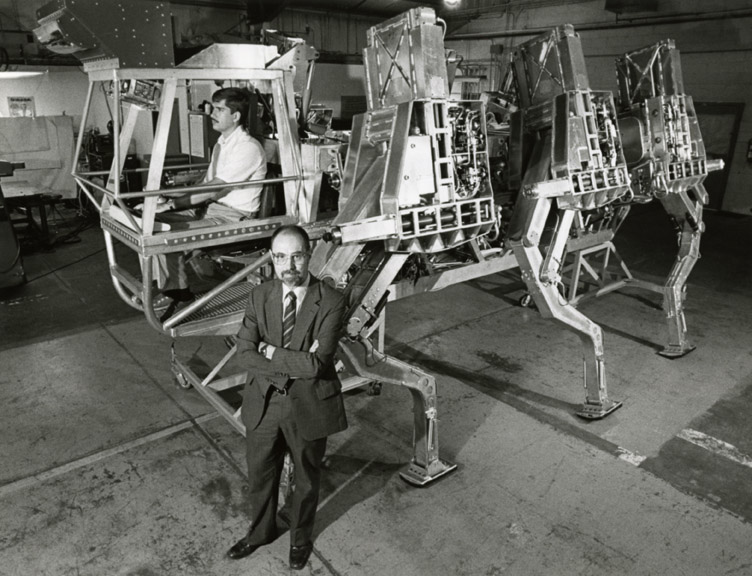What do you get when you combine 20 years of research, $5 million, and a Star Wars Imperial all-terrain vehicle? Ohio State’s Adaptive Suspension Vehicle (ASV), nicknamed the “Walker.” Developed by electrical engineer Robert McGhee and mechanical engineer Kenneth Waldron, along with a 60-member team of students and technical assistants, the ‘Walker’ was developed under a research contract from the Defense Advanced Projects Research Agency (DARPA).
The ASV was 17 feet long, 8 feet wide, and 10.5 feet high, and had six legs to support its three-ton aluminum body. It was designed to carry cargo for industrial and military applications over rough, mountainous, icy or muddy terrain, and was capable of crossing 9-foot-wide ditches or 7-foot-high walls. A forward mounted radar system scanned the terrain ahead, and fed that data, along with instructions from the operator’s joystick, into the 16 onboard computers that coordinated and controlled the ASV’s legs. From there, the computers moved each leg individually across its individual axes of motion (up and down, forward and back, and closer or farther from the ASV’s body).
According to press clippings here at the Archives, McGhee, the developer, had long held an interest in the relationship between living creatures and machines, and the inspiration for the ASV came from the legs of a horse named Teddy he had bought for his daughter’s 10th birthday. Much of what McGhee learned from his time as an engineer and from Teddy went into the design of the ASV.
After difficulties with cold-weather tests, DARPA began to lose interest in the ASV. After failing to win a competition for an autonomous rover for NASA, Ohio State later began exploring the vehicle’s use in the logging industry. Unfortunately, that’s where the paper trail ends here at the Archives. If anyone knows the rest of the story, give us a shout!





Recent Comments